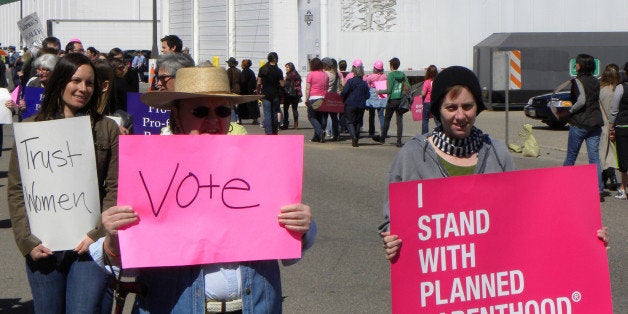
The Population Institute this week is releasing its annual 50-state report card on reproductive health and rights, and it is not an encouraging report. It is, in fact, alarming.
Nineteen states received a failing grade and the U.S. grade fell from a "C" to a "D+". Attacks on Planned Parenthood, both physical and political, are jeopardizing the ability of women to access contraception and other reproductive health care services. At the same time, political assaults on sex education programs are gaining momentum and threatening the progress that we have made in reducing teen pregnancies. It all adds up to a bad report card for 2015, and it could get worse in 2016 as Congress inches ever closer to cutting off funding for Planned Parenthood, slashing support for comprehensive sex education programs in the schools, and eliminating funding for Title X, the federal program of assistance to family planning clinics serving low-income households.
In 2015, the U.S. House of Representatives voted seven times to defund Planned Parenthood, an action that would deny millions of women access to a trusted health care provider. The U.S. House Appropriations Committee voted again in 2015 to eliminate all funding for Title X, an action that would deny millions of women access to contraception and other vital health care services, including cancer screenings.
While the White House and the Senate successfully blocked these actions in the year-end budget negotiations, the efforts to cut funding are unrelenting. Congress is kicking off the New Year by sending a bill to the President's desk that would, in addition to repealing the Affordable Care Act, also eliminate federal funding for the contraceptive services provided by Planned Parenthood through Medicaid and Title X-supported clinics. The President is expected to veto the measure, but the political tug-of-war will continue throughout the year.
Federal cuts in support for Planned Parenthood, even if offset in part by funding for other providers, would have a devastating impact on women in this country. Planned Parenthood health centers make up only 10 percent of publicly funded safety-net providers, but they serve 36 percent of the clients seeking contraceptive services. In 103 counties with a Planned Parenthood health center, the Planned Parenthood facility serves all the women who are using safety-net clinics to access contraceptive services. The defunding of Planned Parenthood would be particularly devastating for poor women and women living in remote areas.
State assaults on reproductive health and rights also contributed to the low grade received by the U.S. for 2015. Abortion restrictions in Texas and in other states have forced the closures of dozens of family planning clinics. Worse still, the physical assaults on family planning clinics, which range from vandalism and arson to the devastating shooting that occurred at the Planned Parenthood clinic in Colorado Springs, are creating a climate of fear that will deter many women from accessing abortion and other services.
The news is not all bad. Seventeen states received a B- or higher and four states (California, New Jersey, Oregon and Washington) received an "A". But the trend is not encouraging, as more states are adopting arbitrary and harassing abortion restrictions that -- in addition to limiting a women's access to legal abortion services --are forcing the closure of family planning clinics providing contraceptive services. Also, 21 states have refused to expand Medicaid coverage under the Affordable Care Act, thereby denying many poor women coverage for contraceptive services.
Equally worrisome, though less noticed, are the escalating attacks on support for comprehensive sex education in the schools. Sex education programs have made a significant contribution to the historic decline in the nation's teen pregnancy rate, but America's teen pregnancy rate is still very high compared to other industrialized countries, and much of the progress that has been realized could easily be lost if federal and state support for comprehensive sex education programs is slashed.
By any standard, this is insane. About half of all pregnancies in the U.S. are unintended, and limiting access to contraceptive services and sex education will only increase the number of unwanted pregnancies and, of course, the demand for abortions.
A woman's reproductive health should not depend on her income or where she lives, but increasingly it does. There are growing disparities between states and even between communities, as state laws and policies now vary widely, and the closure of clinics in poor urban areas and remote rural communities is limiting physical access to reproductive health services.
2015 was a bad year for reproductive health and rights in the U.S., but 2016 could be worse. Stay tuned. Better yet, get active.
